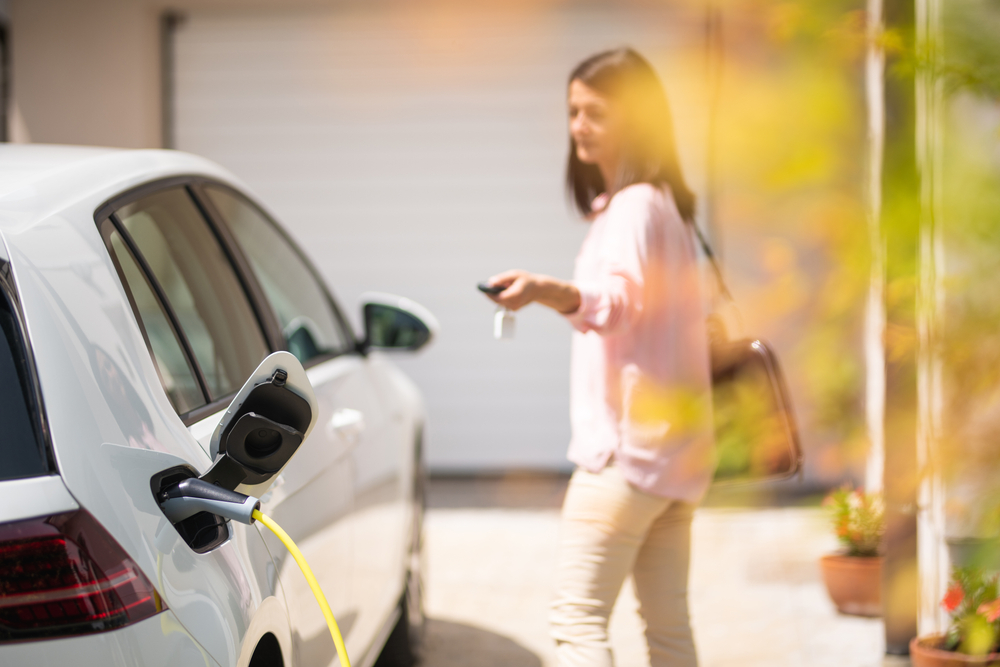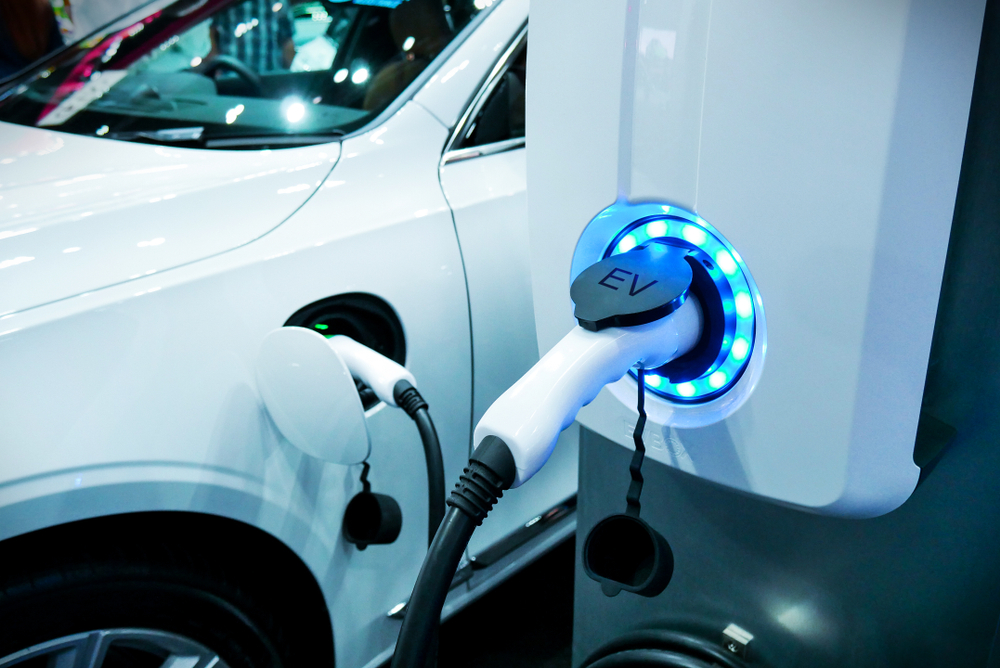Tesla has become one of the most popular manufacturers for luxury electric vehicles. Tesla currently offers four energy-efficient models in its lineup: Model S, Model Y, Model X, and the Model 3. For the 2021 sales year, the Model Y was the 17th most popular vehicle in the U.S.
While electric cars don’t rely on the pump at the gas station, their engine does require a charged battery for operation. This means that drivers need to plug into an electrical outlet and charge up. How long does it take to charge a Tesla?
Charging times for Tesla models can vary depending on the type of charger a car owner uses. There are three types of charging stations:
- Level 1
- Level 2
- Level 3
The Range of Tesla Models
The range of an electric vehicle denotes how far the vehicle can travel on a full charge. However, like a car that runs on fuel (or gasoline), drivers will not want to wait until the battery is almost drained to find a charging station. For this reason, the range achieved between charges can vary.
Tesla’s models are known for their longer range. In fact, the Model S Long Range has an estimated range of 405 miles, while the Model S Plaid has an estimated range of 396 miles. The Model Y Long Range and the Model 3 Long Range both can drive more than 300 miles on a full charge.
About the Different Charging Stations
When buying a Tesla, consider the different charging station options. For home, buyers can use a level 1 or level 2 charging station. Here’s what to know about these charging methods.

Level 1
Tesla buyers can choose to purchase a level 1 charger. This is a cord that can plug into a standard 120-volt outlet. A level 1 charger from Tesla also is called a ‘mobile connector.’ While this is an inexpensive option, it’s also the most time-consuming method for charging a Tesla model.
According to Tesla, the mobile connector provides three miles of range per hour. When car owners do the math related to the estimated range of each model, they might realize that the level 1 charger will need to be used nightly to ensure that the car stays charged.
If the battery runs extremely low, the car could take a few days to fully charge via a standard level 1 or mobile charger. However, Tesla explains that drivers who keep their driving distance to around 30 miles per day (or less) could opt for a mobile charger and simply charge the battery every night.

Level 2 Charger
Tesla offers a wall connector charger that also could be known as a level 2 charger. This is a more efficient way to charge a Tesla model. The wall charger is capable of charging the vehicle up to 44 miles of range per hour.
This means that even Tesla’s longest range model could charge overnight via a wall connector charger. However, the faster option also is more expensive. A level 2 charger requires a 240 volt outlet. If a home is not equipped for this voltage, car owners would need to hire an electrician to upgrade their outlet. The cost of a professional could vary.
If the home is equipped with a 240-volt outlet, the car owner would still need to pay for the charging station plus any installation costs. Tesla’s wall connector is priced at $400, but, again, additional installation costs might apply.
Level 3 Supercharger
Tesla owners on the road can locate a Tesla Supercharger in their area when they need a quick charge. While the Level 2 wall charger offers up to 44 miles of range every hour, the Supercharger is capable of offering up to 200 miles of range in 15 minutes.
A nearly drained Tesla battery could take less than half an hour to fully charge. Tesla owners can access Superchargers across the globe. Tesla offers more than 30,000 Superchargers around the world.
While a Supercharger is incredibly efficient and fast, these chargers are not yet available to install at home. In fact, level 3 chargers are estimated to cost between $15,000 and $50,000. To put this into perspective, one of Tesla’s most affordable models is less than the cost to own and run a level 3 charger!
Level 3 chargers or charging stations also require a higher voltage than most homes could provide. These chargers require a power range of 100 amps; in contrast, a level 2 requires between 12 to 80 amps.
What Does it Cost to Charge a Tesla at Home?
While car buyers might want to know how long it takes to charge a Tesla, they’re probably more curious about the cost of that charge. To compute the price of charging, car owners need to find the price of electricity in their area.
To find the current price of electricity, simply grab last month’s electric bill. Divide the price of electricity used by the number of hours. This number will be the price of electricity per kWh.
Car owners also will need to know how much they drive each month. Kelley Blue Book interviewed John Voelcker, an auto journalist and expert, who explained that an electric car typically can drive about three or four miles per kWh. Car owners should divide the number of miles they drive by three (or four). This answer will be the total kWh per month. Then multiply that figure by the cost of electricity.
Car owners also could keep track of their weekly driving and compute costs this way, too. Even if a car owner drove 1,000 per month and used about 250 kWh, they would pay about $32.50 per month for electricity (assuming the kWh of electricity is around $0.13). Many drivers would spend much more than this to keep their tank filled with gasoline, especially if their car is a ‘gas guzzler.’

How Much Does it Cost to Charge an Electric Car at Public Charging Stations?
Most experts will recommend that electric car owners charge their vehicles at home. The electricity rates for the home will be less expensive than public charging stations.
While public stations might be incredibly fast, they also can be incredibly expensive. Electrify America offers memberships that allow electric car owners to have discounted rates at participating stations.
The cost of membership is only $4. Electricity rates vary by state, but members pay around $0.31 per kWh. Guests will pay around $0.43 per kWh. These stations may be incredibly fast, and could charge a vehicle in about half an hour.
How much will charging cost at a public station? On average, an electric car needs about 30kWh to drive 100 miles. If the car has driven 100 miles, the price as a member for a public charger might be less than $10. Non-members, though, would pay around $13. This is still cheaper than gasoline, especially during times when the price at the pump is incredibly high.
Compared to the price of electricity at home, the price of public charging stations is much higher. In addition, some stations could charge a session fee for access. KBB explains that while free stations could be an alluring option, the area where they are offered might charge for parking.
How to Charge a Tesla Quickly
Car buyers who are interested in purchasing a Tesla model should consider their charging options at home. For those who drive short distances each day, a level 1 or mobile connector might suffice. This option is less expensive, but it is only capable of charging about four miles of range per hour.
A level 2 charger or wall charger is more expensive (priced at about $400, plus installation). However, this charger is capable of providing up to 44 miles of range each hour. This could mean that a fully zapped battery would be completely regenerated after a full night of charging.
The price of a level 2 charger can increase if the home isn’t equipped with a 240-volt outlet, though. Hiring an electrician to handle these upgrades could add hundreds of dollars (if not more) to the investment cost of a level charger.
Those whose homes are equipped with a 240-volt outlet might find that this fast charger is the best option for their needs, and it might help them avoid public charging stations.
Level 3 superchargers are available for public charging needs. Tesla offers its own network of charging stations. These stations can provide 200 miles of range in about 15 minutes. A fully drained Tesla battery could fully recharge in less than half an hour via a public Tesla Supercharger.
Other public stations also are available. However, costs of these chargers might vary. Some could charge a session fee, which bumps the price.
Most experts recommend charging the vehicle overnight at home for the least expensive charge. Again, though, whether the car owner opts for a level 1 charger or a level 2 charger for their home might simply depend on their preferences, their driving habits and their budget bottom line.

